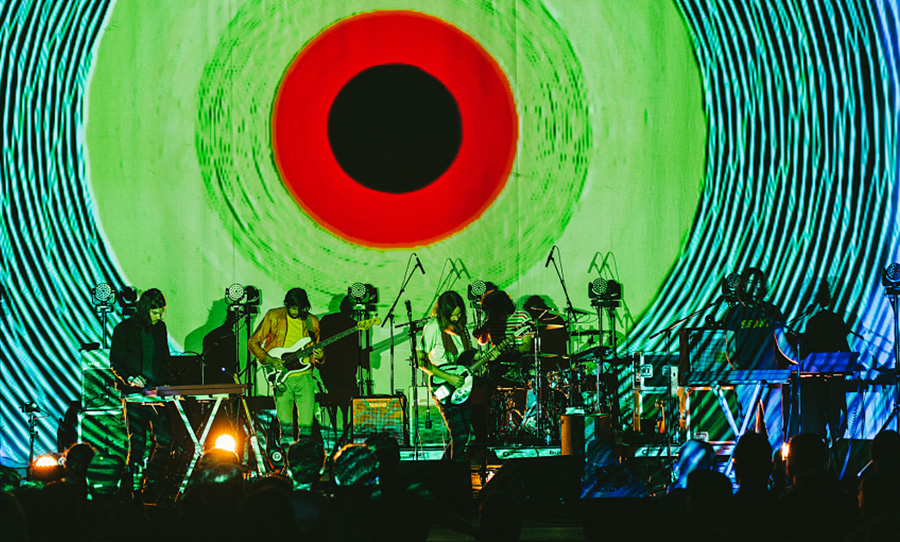The impact of a performance largely hinges on the connection an artist creates with their audience through sound. But what makes great a live sound? Here we run through some of the basics.
With COVID on the run (we hope) and young bands and gigs that simply did not get a chance to experience the buzz and thrill of playing to a live audience back on the rise, we thought it might be useful and informative to share some of our expertise in the live space areas. Both from and audience’s perspective and that of the FOH / bands perspective.
The anticipation of a gig played by your favourite band is undeniably special. The reality of the experience and its place in your memory hinges not only on the passion of the performance and the connection that the artist or band makes with the audience.
It also greatly depends on the venue, the live sound, and things going technically smooth. We’re going to uncover the basics of the live show setup, the critical components and roles that are filled by the hard-working crew, in order to create those unforgettable moments, all while maintaining their presence firmly in the shadows.

Venues and P.A. Systems
Small Rooms
We all need a place to play, right? Depending at what phase the act is in their career, the show could take place in the corner of the front bar of the local pub, or a two-thousand seat theatre, or a massive outdoor festival. Wherever the venue, the gig can be great, but the sound will either be afflicted by, or enhanced by the space’s unique acoustic attributes.
In smaller venues like pubs and cafes, with small P.A. systems, it can often be a battle for the live sound engineer to keep the volume coming from the instruments quieter than the level that the P.A. is capable of putting out. With smaller rooms, the sound has more opportunity to reflect off parallel walls, zing off large windows and create unpleasant resonances.
Having said that, many of us would recall that some of our favourite all time gigs have been in smaller venues – ones that can fill up quickly and create an unfakeable degree of intimate contact between band and audience.
Bigger Rooms
With a bigger the venue and a more powerful the P.A., a (theoretically) more consistent sonic experience can be provided. A theatre-sized space will provide clear stereo imaging, a flatter response across a wider spectrum of frequencies and much more volume. For the band, the sound is different too.
The big stage incurs the need for band members to have their own monitor mixes, operated by a dedicated engineer. This is a separate mix from the Front Of House, enabling them to hear exactly what they need to, so they can put on the best show possible.
Outdoor festivals are hugely popular and bring with them an extra set of logistical challenges. Putting audio out to a hugely dispersed field of punters with z is a demanding job that requires lots of P.A. power. Massive line array systems are designed for maximum coverage, that cleverly curl downwards to make sure the sound hits the brave folks at the front of the stage.
Delay stacks are also employed to carefully sync up with the main arrays, as sound travels so slow that awkward syncing issues are evident for the audience members watching from afar. Add to that decibel level restrictions and you’ve got a crew that is accomplished at keeping everyone happy at all times!
The Crew and the Gear
The Crew
Speaking of the crew, the Front of House engineer is charged with the task of providing the mix for the paying customers (they can also provide monitor mixes for the band via auxiliary sends, should size and/or budget prohibit the use of a dedicated monitor engineer).
Depending on how many sound sources that are being miked up, this job can be quite challenge. And unlike mixing songs in a studio environment, there are many potentially compromising factors that can hamper live sound engineering – unfriendly acoustics, sound level restrictions and the need to deliver a sensible mix – where everything can be heard, at all times, in all locations – to the aforementioned paying punters, to mention but a few.
The Gear
With so many moving parts, hiccups can happen, even at the very highest level of professionalism, so it’s worth remembering that when go a concert and everything goes so technically smoothly that you don’t even notice it, there’s a great deal of effort being expended by a crew of hard-working humans behind the scene.
So what about some of the gear that makes it all happen? Well aside from a splitting of the signal to create a separate monitor mix, it’s all quite familiar to people who have operated studio consoles – preamps, equalisers (the more expensive the desk, the more likely it is to have sweepable controls rather than the simple treble, mid and low frequency controls), panning controls and faders for outputs.
Effects
Auxiliaries control external effects (or foldback sends in smaller setups). The stereo graphic equaliser is tends be inserted post-mixing desk as a way to “tune the room” – notching out frequencies that cause resonance or feedback, or boosting frequencies that need enhancement due to the peculiarities of the room. As you can imagine, this capability is immensely practical if you’re on tour, and you have to recalibrate the P.A. depending on each venue’s acoustic properties.
As the technology becomes more fluid, however, hybrid digital setups such as the one provided by the eMotion series of consoles from Waves that have similar functionality to the DAW have become more popular as they tend to condense the amount of rack gear needed and allow for the saving of live sets.
This kind of instant recallability is a boon to festivals, where many bands play on the same stage, through the same system, all under the pressure of tight time schedules. And as the stability of these platforms improve, bands are becoming more adept at bring their favourite studio sounds to the stage.
Microphones
At the sound source, dynamic microphones tend to be favoured. Why? Moving coil dynamics tend to be less sensitive, than condensers. This is important because the stage is an incredibly dynamic environment, and sensitive condenser microphones will be more prone to feeding back. Dynamics are robust – if you’ve seen a lot of rock and roll, you’ll notice that microphones are capable of taking a lot of punishment. Some condensers like the Neumann KMS-105 are designed for live vocal performance, but for most instruments, including vocals, dynamics are commonly preferred.
In spite of the inherent similarities shared by the realms of studio and live mixing – the purpose of both of course, is to make things sound great – the experience of listening in both settings could hardly be more different. An album can be taken with you anywhere, played through headphones, blasted on a stereo in your bedroom and keep you company in a traffic jam.
The Live Experience
The live experience is undoubtedly different – a shared one and keenly focussed because of its impermanent nature. At the very least, gaining an insight into the acoustics of a venue, the equipment involved, and the skills of the people who manage to coalesce the emotional power of live performance, with the technical expertise and consistency needed to make the gig a success, can add an extra dimension of appreciation the next time you see live music.



